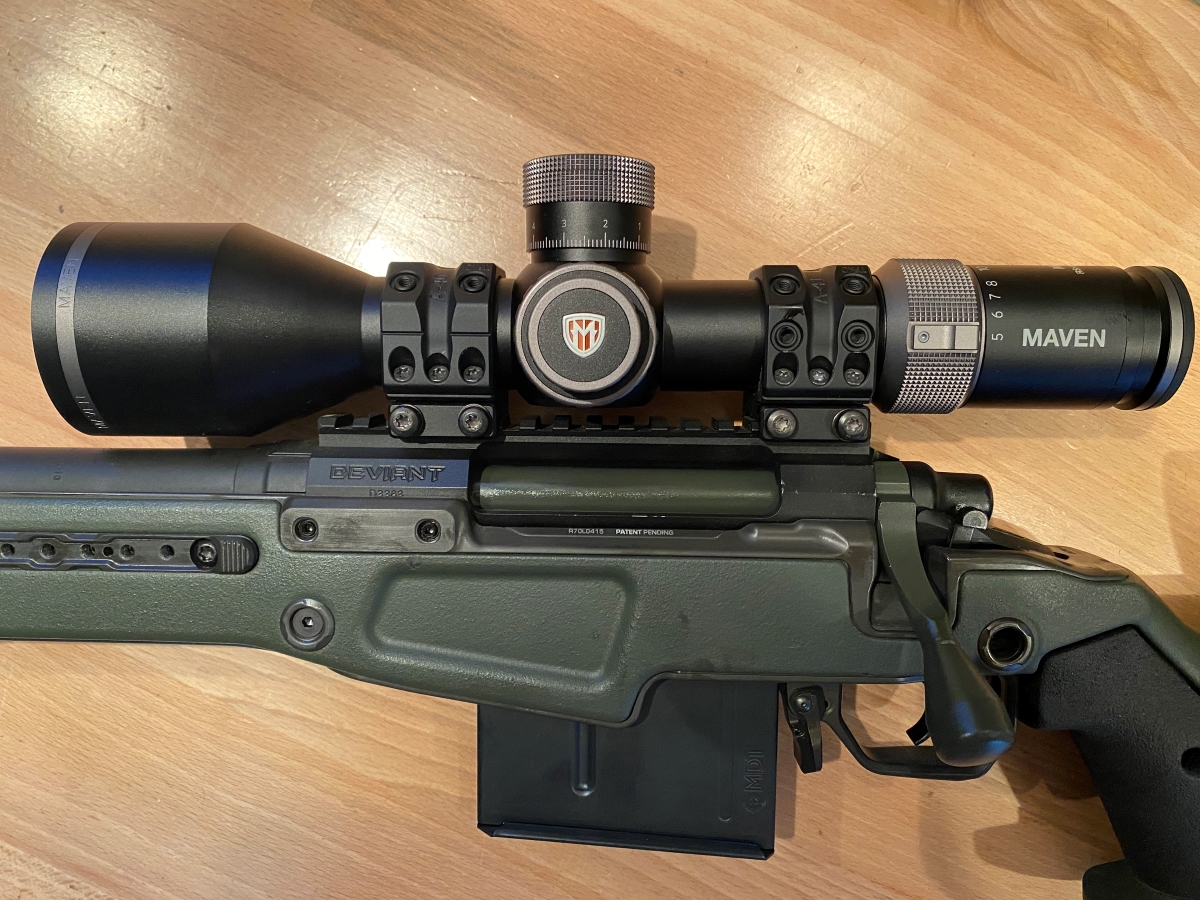My first experience with Maven Optics was in 2018 when I tried out one of their hunting scopes. I find their optics to be a good balance between features, clarity, durability, and cost. Maven is a “Direct-to-Consumer” company, meaning the customer doesn’t pay retail markup prices because they eliminate the middle-man. Their product line includes high-end binoculars, spotting scopes, and riflescopes.
Maven recently released their first competition riflescope; the RS.4. This is a 5-30X56 First Focal Plane optic designed with the precision rifle competitor in mind. The RS.4 is available with 4 different reticle/adjustment options, (two of them Minute-of-Angle based and two of them Milliradian based).
Features:
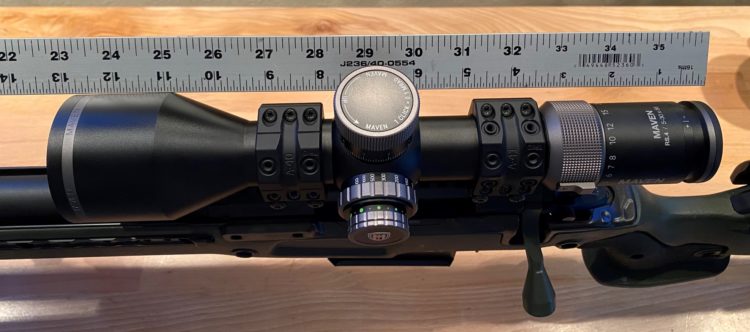
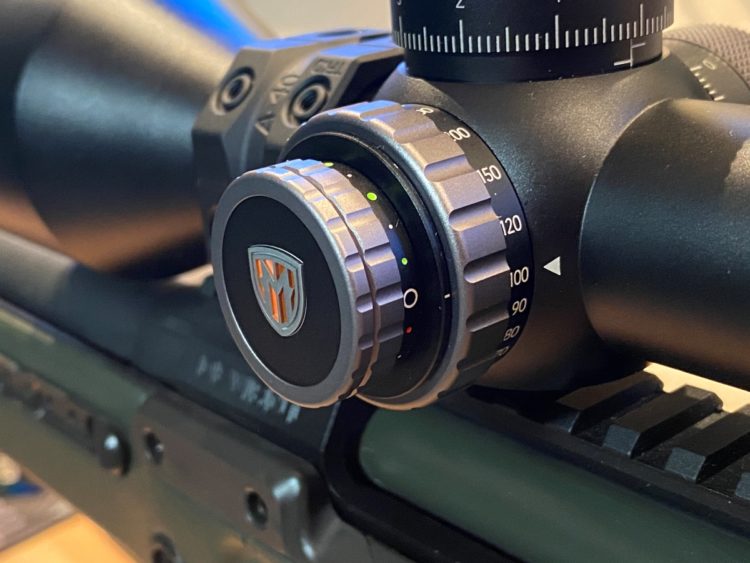
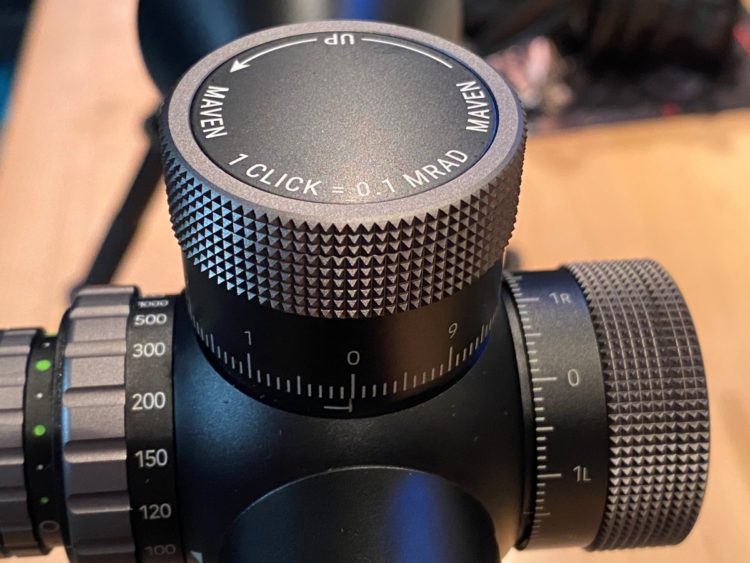
Reticle and Glass Clarity:
The reticle pattern in the scope I received for evaluation was the CFR-MIL pattern, a “Christmas Tree” style reticle.
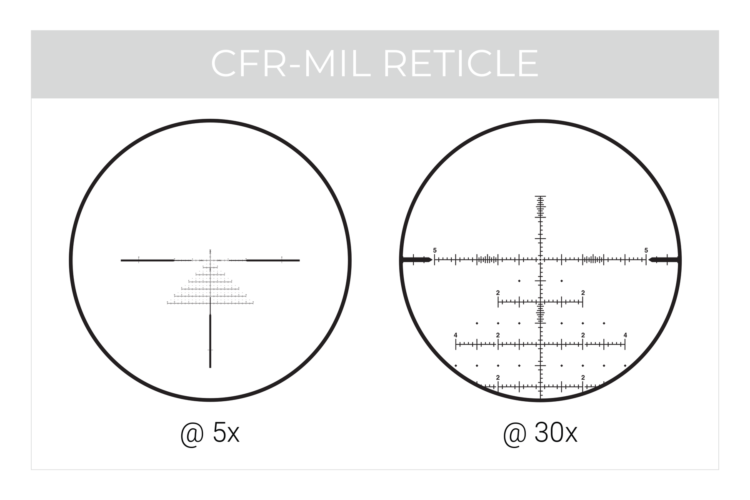
The RS.4 has generous eye-relief but a pretty tight eye-box; likely a result of all that magnification. The large magnification range also means a little vignetting is inevitable. This is observable at the intermediate magnifications (between 10-20X), where the reticle blurs slightly near the edges of the field of view. Only the most discriminating users will notice this, and it doesn’t affect the main viewing portion in the center field of view.
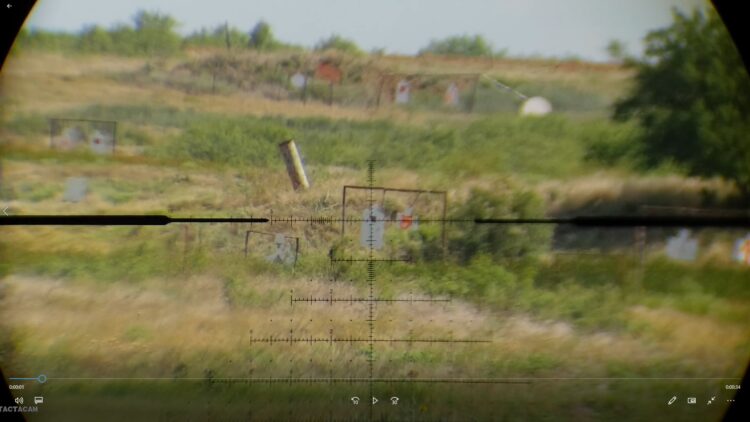
Illumination
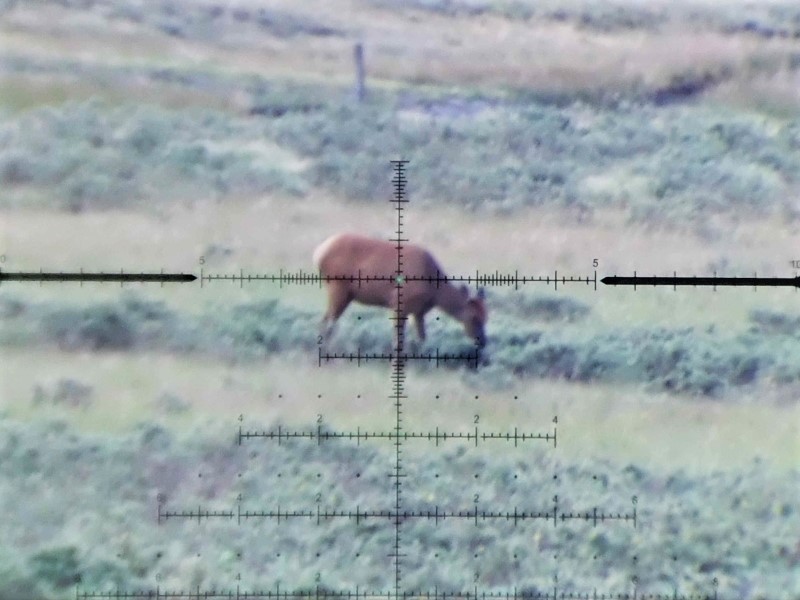
Performance
To test the performance of the RS.4 on a rifle that could make good use of its magnification, I mounted it on a .300 Win Mag.
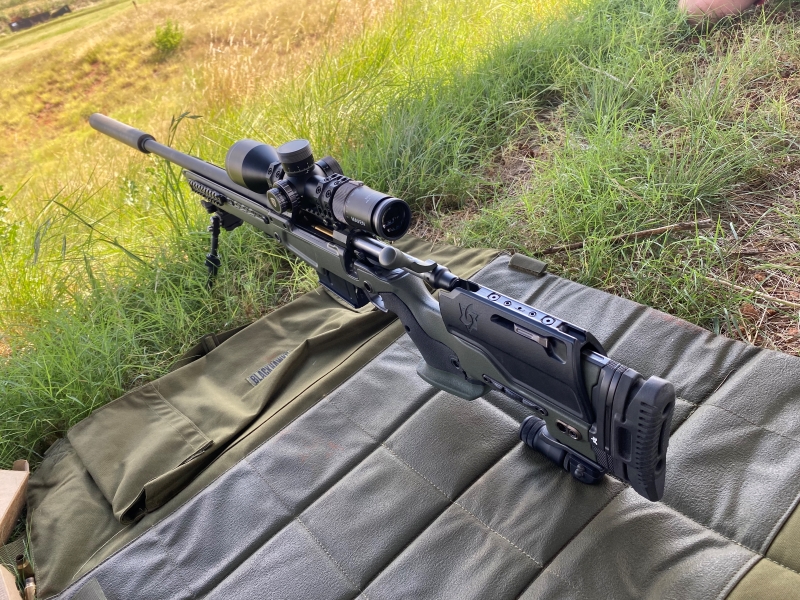
While teaching an armorer class at Badlands Tactical in Oklahoma, I availed myself of their 1000yd known-distance range. After a few rounds to establish a 100 yard zero, I dialed my standard 500 yd dope on this rifle and held on the center plate – dead center hit. Not one to waste ammo, I dialed 700 yd data and (after playing with the wind for a round or two) another dead center hit. Finally I dialed 1000 yd data and with a 1.2 mil left hold got three hits in a row at 1000 yards. After that, we played around with various other distances for about 30 more rounds and found tracking to hold just fine.
Next, I wanted to ladder test with something a little more tame so I re-mounted it on my 6.5 Creedmoor PRS gun.
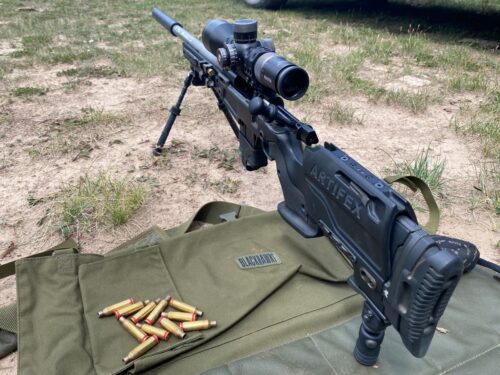
I performed the testing at a “wild” range in the mountains where I live on National Forest land. There’s a spot approximately 90 yd X 60 yd square that the locals use for plinking and sight in and I was fortunate to be the only one there that day. In order to squeeze out 100 yards at this range I had to shoot somewhat diagonally. It only took me three rounds to get a confirmed zero and then I began my ladder test. When I checked the target, I observed that rounds were slowly starting to climb a little higher than anticipated, instead of striking at my elevation lines on the target 3.6 inches (1 mil @ 100 yds) apart. This was curious to me, as the rounds looked like their elevations were very close to 1 mil apart in the scope. Fortunately, I carry a large tape-measure in my range bag and when I physically measured the distance between the target and my shooting position, I got just over 104 yards. Suddenly the math worked out. 1.04 X 3.6 = 3.744. When I re-measured the ladder test using the correct mil measurement for 104 yards of 3.75 inches, the elevation lined up perfectly – or as perfect as this shooter was capable of that day.

RATINGS:
Clarity: 4/5 – The glass in this scope is good, no doubt about it, but I had some issues with reticle and image clarity toward the edges of the field of view, the camera definitely makes it look worse than it really is. It isn’t really a problem unless you are trying to use the extreme lower parts of the reticle for ranging or holdovers with wind holds. Also keep in mind this was a demo model, not the production model, so it might have been an aberration in this particular scope. I’m assuming this scope uses Japanese glass based on the scope markings. Japanese glass is excellent. It isn’t quite as sharp as German glass, but it is very, very good.
Reticle: 4.5/5 – I wish Maven would have found a happy medium between this reticle, the CFR-Mil, and their much simpler SHR-W (mil) reticle. The SHR-W would be a perfect reticle if it had .2 or .1 mil marks on the main horizontal and vertical stadia. The CFR-Mil has these finer subtension marks in a “Christmas tree” array, but the reticle starts to disappear outside the field of view at magnifications greater than 10 X, and it is so fine it can’t be distinguished very well at magnifications lower than 10 X. Again, is it a problem? ehh… not really, I think it is just a little more than what 99% of shooters actually need in a precision rifle optic reticle.
Adjustments: 5/5 – Solid and precise, tool-less re-zero, nice knurling throughout and a usable lever that doesn’t get in the way on the magnification ring. It is possible to start to unscrew the battery compartment when adjusting the illumination if you aren’t careful.
Tracking: 5/5 – Both Maven scopes I’ve tried had perfect tracking.
Illumination: 3.5/5 – This is the only area that was somewhat of a disappointment. It isn’t terrible, and the low settings are actually better than most because they aren’t too bright. The option of red or green is also really nice. There are “off” settings between the illumination settings which is as it should be. The only problem is the higher settings “blossoming” and the sparkly, indistinct glint off the stadia lines instead of sharp, bright lines. It is usable, but just not quite right. I do think illumination is important, but it’s also not something you use most of the time.
OVERALL QUALITY SCORE: 88% VERY GOOD
If you are a sponsored PRS shooter, regularly scoring in the top 10% of your local matches (in which case you probably stopped buying scopes some time ago and have shelves full of optics from sponsors and winnings) this may not be the scope for you. Since that is a relatively small percentage of shooters, I would say for the casual precision rifle shooter looking for a durable, functional optic to outfit a long-range gun; this has everything you need. The RS.4 is an attractive, durable, waterproof and fog proof optic that can handle harsh environments and magnum recoil. The ability to customize the optic with different colors (or just flat black) is nice. The extra magnification does give you an edge when using your reticle for range estimation. The tracking and repeatability are superb. Of course, it comes with a Lifetime Warranty.
I admit it, I’m a bit of a scope snob, I own several scopes that retail at or above $3K. I’m accustomed to top of the line glass. While the RS.4 isn’t in the same class as say…Kahles or S&B, it also doesn’t come with those hefty price tags and awkward maneuvers shipping scopes overseas for service or repair. The Maven RS.4 gives you plenty of magnification, well-designed features, and overall quality that comes close to these more expensive premium scopes for a fraction of the cost. Despite some of its minor shortcomings, at a current retail price of $1800 it still represents a great value for the shooter who needs a tough optic with lot of magnification and an illuminated first focal plane reticle without having to shell out thousands of dollars to get it.
Material Disclosure
I received this product as a courtesy from the manufacturer via Spotter Up so I could test it and give my honest feedback. I am not bound by any written, verbal, or implied contract to give this product a good review. All opinions are my own and are based off my personal experience with the product.
*The views and opinions expressed on this website are solely those of the original authors and contributors. These views and opinions do not necessarily represent those of Spotter Up Magazine, the administrative staff, and/or any/all contributors to this site.
